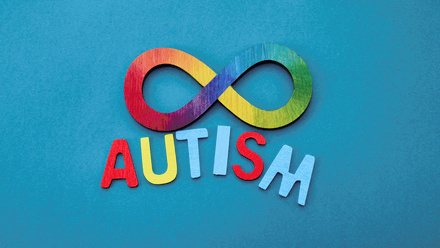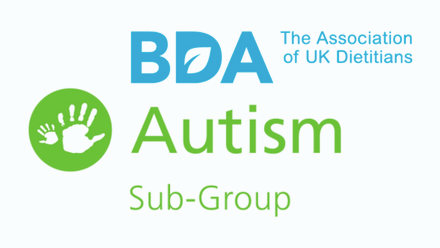Dalhia Campbell is a Specialist Dietitian for Adults with a Learning Disability. She shares her advice on supporting autistic individuals from her personal and professional experience.
Autism, or autistic spectrum condition (ASC), is a lifelong condition.
It is thought that around one in 100 people in the UK are autistic. It is important to remember that everyone - whether they are on the autism spectrum or not - is an individual with their own set of abilities, and personality. The traits and characteristics someone has can vary considerably so it is always important to think about what matters to them.
I am a registered dietitian, and my main NHS role is working with adults who have learning disabilities. Many of the individuals I work with are on the autism spectrum as well as having an accompanying learning disability. I am also a mum to an autistic teenager, so I am coming at this from different angles. I thought it would be helpful, as part of Autism Acceptance Month, to share some of my ideas, experiences, and things I have learned along the way (and things I'm still learning!)
I have had the opportunity to attend conferences (in-person if anyone can recall what they were!) and have done my own self-directed online learning and face-to-face training sessions over the years. The Autism for Dietitians Masterclass by Zoe Connor and Elaine Mealey is an excellent resource, highlighting the aspects of autism that can affect nutritional status and really aiding understanding of the underlying factors, and is one which our dietetic department invested in.
When we think about diet and autism, we know that dietitians tend to get involved when an individual is struggling with their eating. Due to the many sensory challenges that autistic individuals may experience, eating can be an incredibly stressful time. This can be true whether the individual is a child or an adult.
Of course, anyone on the autism spectrum can have any number of dietary or health-related conditions (such as diabetes, Coeliac disease, IBS etc.) so could be seen in any clinic or hospital setting. I therefore believe it is really important that as dietitians we all understand autism and how we can offer support and make reasonable adjustments in any setting.
Sensory issues
We all have different senses and sensitivities. Autistic people can experience increased sensitivity (hypersensitivity) or reduced sensitivity (hyposensitivity) to a number of different senses.
This can, of course, affect the types of foods eaten. Not every autistic person has a restricted diet; many eat a wide variety. I am not looking specifically at those with severely restricted eating here, but check out Hannah Whittaker's recent article on challenges surrounding mealtimes. I want to step away from solely looking at the food and eating perspective, to take a wider view of how we can support any individual and the things to be conscious of.
It is important to be aware of these sensitivities as this can affect how well someone can take in information; how anxious that person may feel. We are all bombarded with sensory information all the time.
For neurotypical individuals, this information is generally filtered, and we then just concentrate on the information we need to take in at that moment and can fairly easily block out other sights, sounds, smell etc. For a person on the autistic spectrum, the brain struggles to filter out information that is not needed, which can lead to feeling overwhelmed.
It can be incredibly difficult to take in information from a clinician if you are being bombarded with all these senses. Imagine there is a bright light right above you, the smell of overcooked Brussels sprouts from the kitchen next door is wafting along the corridor, you can hear the constant buzzing of a computer in the corner of the room, your chair is uncomfortable and your feet are dangling, you are wearing a jumper and the label is feeling really scratching to you.
You are probably already feeling a bit stressed, as you know you are going to be expected to make eye contact and talk about what you eat. It is bound to be overwhelming, isn’t it?
So, try and put yourself in your patient’s place and imagine how they might be feeling. Take a moment to think about the setting and what reasonable adjustments could make someone more comfortable? It can be helpful to think of what we see - characteristics and traits - as the tip of the iceberg. It important that we consider possible underlying causes, stresses or anxieties - the ones we cannot see (hidden below the waterline).
|
Sense affected |
Example and things to bear in mind |
Strategies and considerations |
|
|
Smell |
Hypersensitive = dislike of strong smells |
The following may be overpowering:
|
|
|
Taste and mouthfeel |
Hypersensitive = may prefer bland or neutral foods Hyposensitive = may prefer strong flavours and textures
|
Hypersensitive individuals tend to prefer a smooth texture and may prefer bland, neutral flavours. Hyposensitive individuals tend to prefer hard crunchy textures and spicy, sharp and strong flavours. |
It is helpful to understand whether someone is overly sensitive to certain foods as this can dictate the types of foods they prefer to eat. Understanding their sensitivities can help the discussion about what foods they may feel able to include. |
|
Visual |
Hypersensitive = finding light uncomfortable |
|
|
|
Sound |
Hypersensitive = will pick up even the smallest sound |
Is there equipment that buzzes e.g. fridge, computer? Is there a noisy corridor? |
Can a quieter room be used? |
|
Proprioception (the body’s ability to sense movement, action, and location)
|
Consider the height of the chair and the need to move or fidget. |
Footstools or wobble cushions can help. |
|
Occupational Therapists can be a valuable resource when looking at sensory issues.
Support
As with any patient, it is important to find out what support they have and might need. What can help them to remember information? Use Health Literacy skills such as Chunk and Check, where you provide small pieces of information and then check understanding. Visual information can often be easier to process than verbal and written, even if the individual has good literacy skills.
It is also important to think about our language and make sure that we are clear and not being ambiguous or making use of metaphors which could be misinterpreted.
Routine, structure, and consistency
Having structure, routine and knowing what to expect can reduce anxiety.
Routine and structure can apply to food. For example, a branded takeaway burger or a specific brand of crisps will always look and taste the same. But one banana may be very ripe, and another could be underripe or bruised, so is unpredictable. Autistic people tend to prefer things that are predictable, as this can help to reduce anxiety
Routine, structure, and consistency is also important to bear in mind in any dietetic consultation. So, for example, it is good practice to outline what is going to happen and how long the consultation will take; this is what we tend to do anyway as part of good practice.
For a person on the autistic spectrum, it is even more important though as small things like not starting on time or finishing late can increase anxiety. You may find that having a shorter session and offering a second appointment can help. I have often used a timer to make sure I stick to the time I set, and this helps alleviate anxiety for the individual also as they know I will stick to time.
Summary
In summary, to best support a successful outcome for people on the autistic spectrum, it is vital to consider not only what matters to them but also how autism might impact on their abilities to engage with you and make changes. It is important to consider what reasonable adjustments you can make to offer the most positive experience.
I hope this article can give everyone a few take-home messages to bear in mind when supporting any individual in a variety of settings. There is currently a project funded by NES (NHS Education Scotland), the aim of which is that AHPs might better understand the barriers typically experienced by people on the autism spectrum and how that is shown in a range of areas, settings and therapies provided by AHPs. This understanding provides opportunities for problem solving and a reduction of barriers experienced by autistic people.






